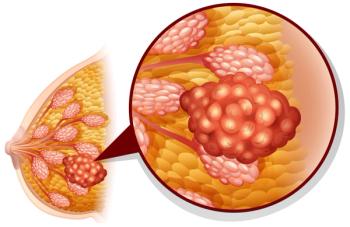
Miami Breast Cancer Conference® Abstracts Supplement
- 42nd Annual Miami Breast Cancer Conference® - Abstracts
- Volume 39
- Issue 4
- Pages: 11
18 Tolerability of First-Line Treatment With Ribociclib for Metastatic Breast Cancer Using 2 Large US Data Sources
Background
In addition to progression-free survival (PFS) and overall survival (OS) benefits, first-line (1L) ribociclib plus endocrine therapy (ET) showed tolerable and manageable safety across the MONALEESA (ML) trials. Ribociclib plus ET is recommended by the NCCN as a category 1 preferred CDK4/6 inhibitor as a 1L treatment option for hormone receptor–positive/HER2-negative (HR+/HER2–) metastatic breast cancer with no visceral crisis in patients who are postmenopausal patients or premenopausal with ovarian ablation/suppression. We describe real-world adverse effects (AEs) of interest with ribociclib in 2 large US datasets.
Materials and Methods
Two cohort analyses were conducted in the Flatiron Health electronic health record (HER)-derived deidentified database and the deidentified Komodo Research Database (KRD; commercially insured, managed-Medicare [excluding fee for service] and Medicaid-insured administrative claims). Adult patients with HR+/HER2− MBC who initiated 1L RIB + ET were included. New onset of medical conditions of interest are presented.
Results
Overall, 373 (EHR) and 350 (KRD) patients who received 1L ribociclib plus ET were included. In EHR, the mean age was 62.6 years, 49.1% were aged 65 years or older, and 17.4% were 75 years or older. In KRD, the mean age was 56.5 years, 16.3% were aged 65 years or older, and 4.6% were 75 years or older. The majority of patients received an aromatase inhibitor. The data suggest an increase in 1L use of ribociclib in 2022, as observed in KRD.
New onset any-grade AEs were: neutropenia (53.4%, EHR; 21.3%, KRD), elevated liver enzymes (9.0%, EHR; 4.6%, KRD), and QTc prolongation (4.0%, EHR; 2.0%, KRD). Evidence of newly diagnosed or suspected CV medical conditions, available only in KRD, was relatively low. The incidence of AEs for patients 65 years or older was consistent with the overall cohort.
Conclusion
Data from 2 US databases reaffirm the safety of 1L ribociclib seen across the ML trials, with no new real-world safety signals among medical conditions of interest. In the real world, 1L ribociclib plus ET is well tolerated for patients with HR+/HER2− MBC, including patients who are older.
Articles in this issue
Newsletter
Stay up to date on recent advances in the multidisciplinary approach to cancer.





